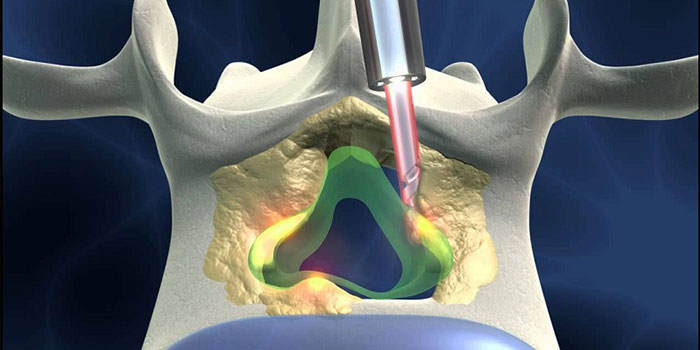
Endoscopy is an ultra minimally invasive form of spine surgery. By combining tiny incisions (usually less than 1 cm) with high-definition endoscopic visualisation, a whole range of procedures can be performed, minimising the amount of disruption to normal tissues and often without the need for general anaesthesia. Endoscopic spine surgery encompasses a number of different procedures, including discectomy, decompression and even fusion surgeries.
The indications for endoscopic spine surgery are similar to those for other lumbar spine operations, including disc herniation, stenosis and spondylolisthesis (or slippage of one bone on another, caused by instability). The reasons for surgery include severe or worsening leg or back pain despite physical therapy, medications and injections, or symptoms of neurological compromise, including weakness, numbness and tingling.
If fusion is needed, a small expandable cage filled with bone can be inserted into the disc space through the same tiny incision. Screws and rods are then placed to secure everything in place, also in a minimally invasive fashion.
Often, surgery can be performed with the patient awake, i.e. not needing general anaesthetic. This allows real-time monitoring of the patient’s symptoms, in addition to eliminating the potential side effects of general anaesthesia.
Every patient’s recovery is different. However, patients can often go home on the same day (or very next day) after endoscopic spine surgery. Walking can usually resume right away, and driving within a week or two. Timeframe for return to work depends on the type of work you do. Most people should wait around 6 weeks before doing more strenuous activity to give the body enough time to heal.
Adhering to the post-operative instructions provided by your surgeon is important to promote healing and reduce possible complications.
Minimally invasive spine surgery is performed through very small incisions. Through these small incisions, segmental tubular retractors and dilators are inserted to retract muscles away from the operative area and provide access to the affected area of the spine. This minimizes the damage to the muscles and soft tissues and lessens blood loss during the surgery. An endoscope, a thin telescope-like instrument with a video camera on the end is inserted through one of the tiny incisions to provide images of the operation field on the monitor in the operating room. Special tiny surgical instruments are passed through the working channel of the endoscope to perform the surgery. Sometimes surgical microscopes may also be used to magnify the visual field. Once the surgery is complete, the tissues fall back in place, as the various instruments are removed. The incision is then closed and covered with surgical tape.
Copyright © All Rights Reserved, By Shethna Spine Clinic